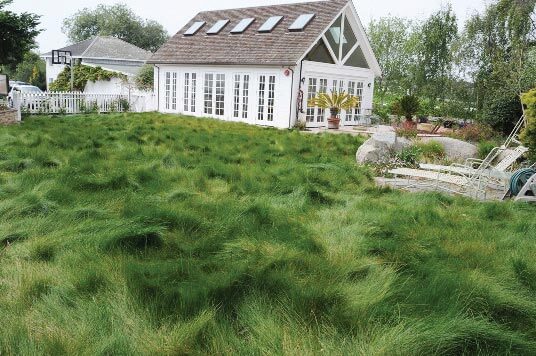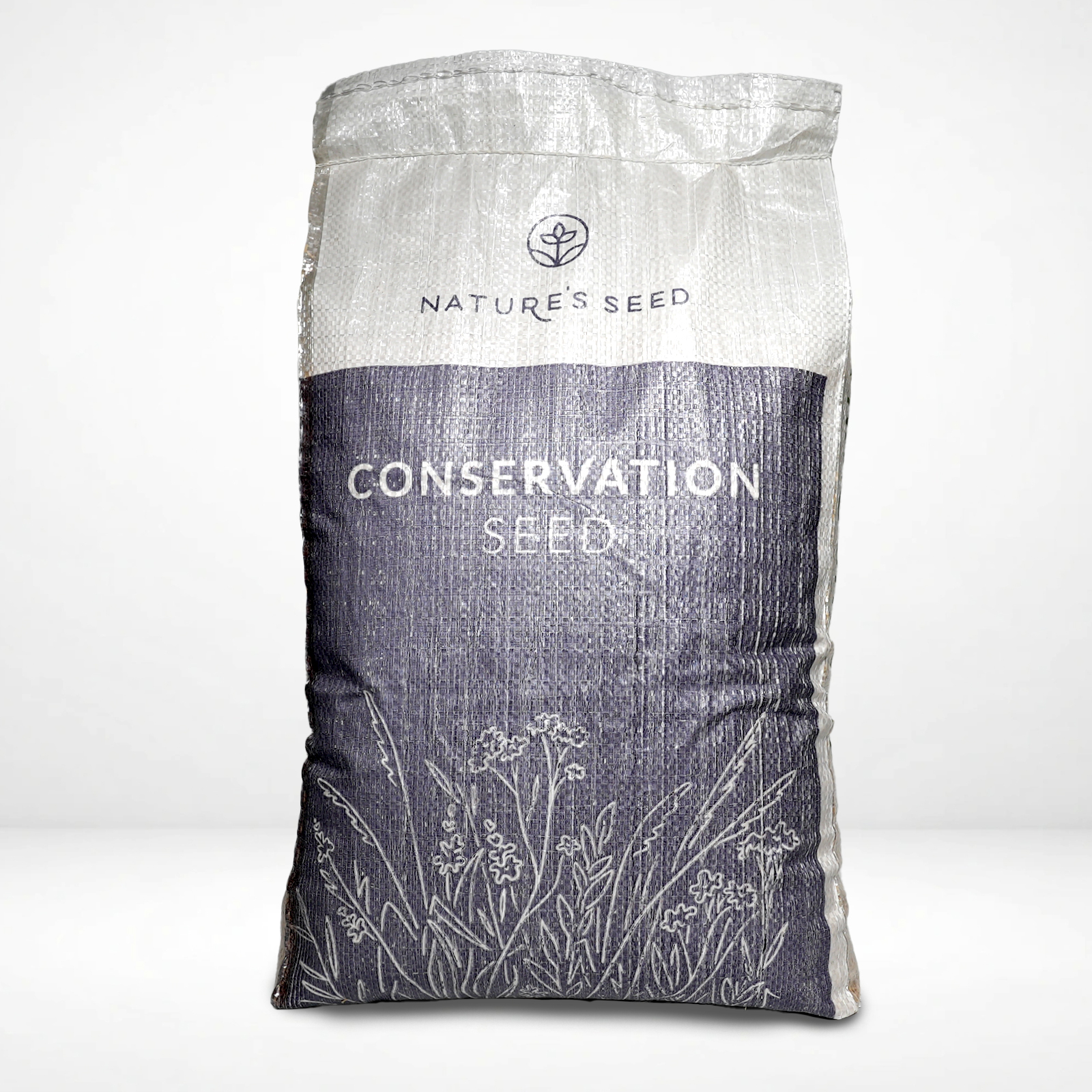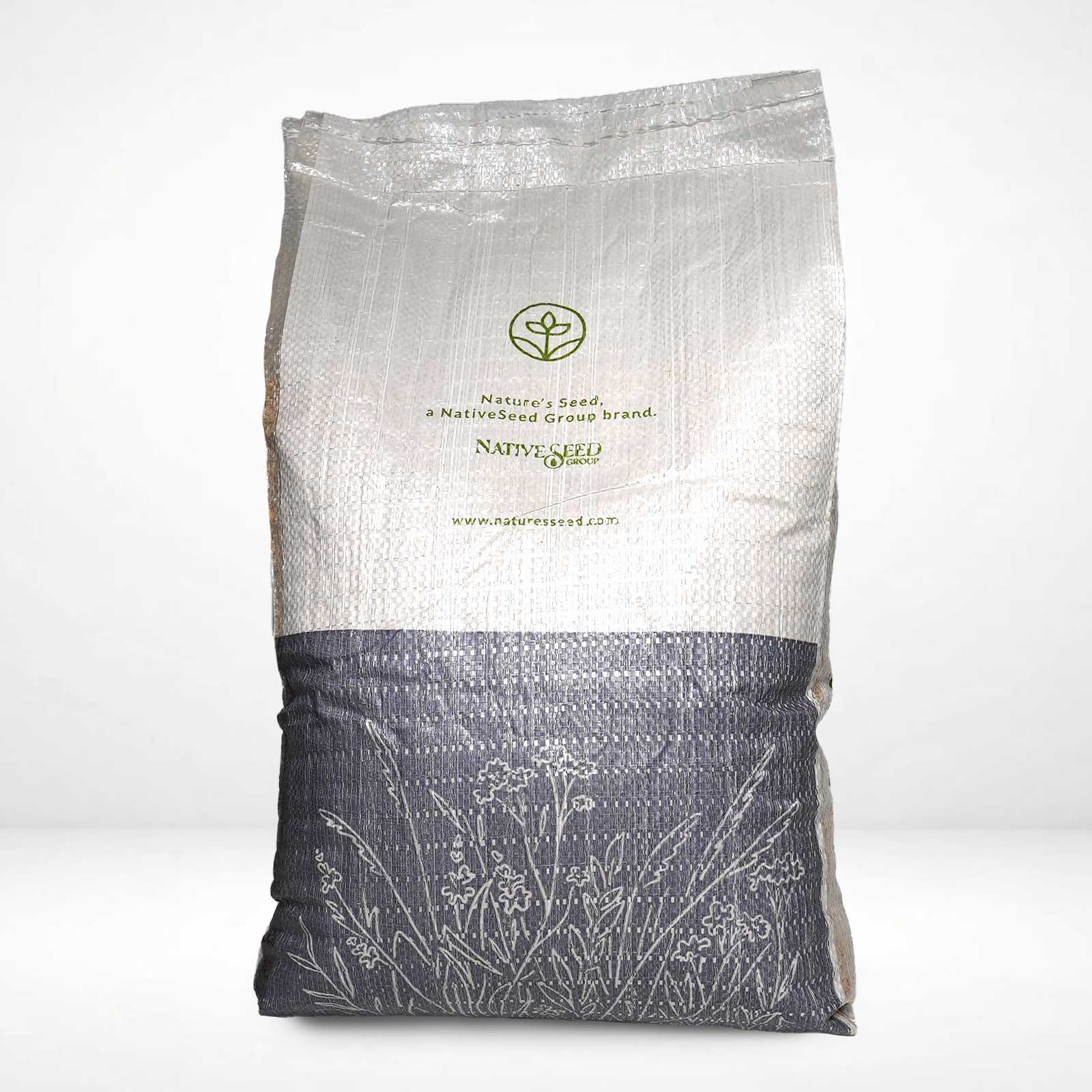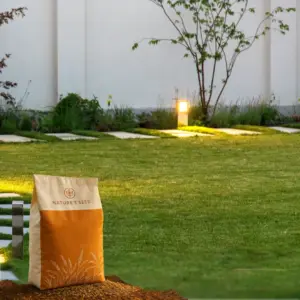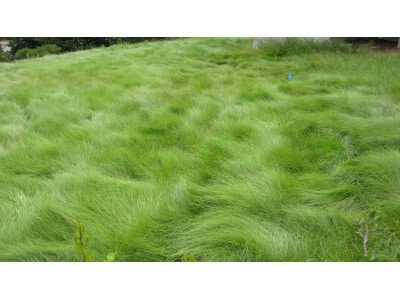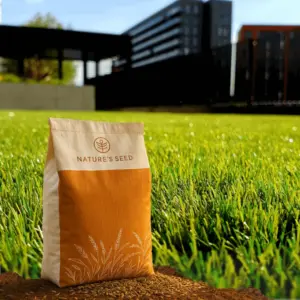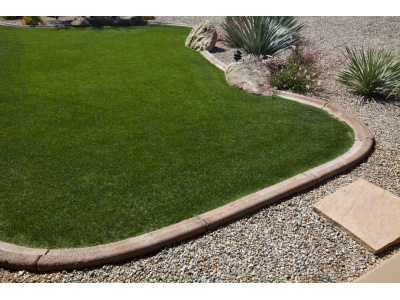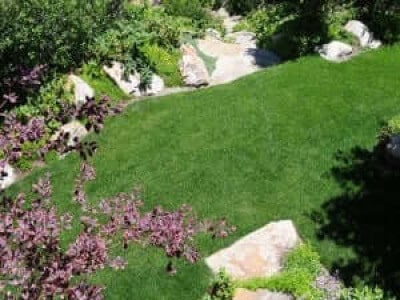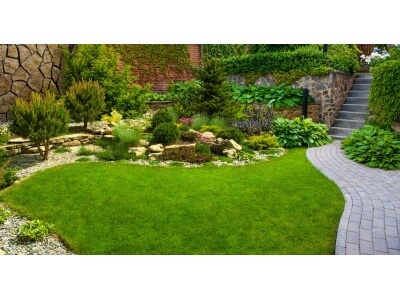Combines two North American native fescues for an eco-friendly lawn that thrives with minimal fertilizer and low mowing—supporting soil health, biodiversity, and water conservation
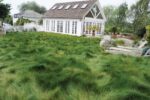
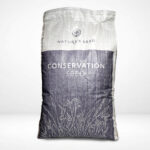
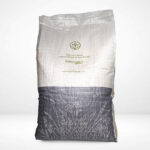
What is Nature's Seed's California Native Lawn Alternative Mix?
Native Fine Fescue Mix is a 100% native, low-maintenance lawn blend of creeping red and Idaho fescue. It’s drought- and shade-tolerant, germinates quickly, and forms a soft, dense turf with fine blades and blue-green color. Thrives in USDA Zones 4–8, needs little water or fertilizer, and tolerates poor soils. Mow for a tidy lawn or let it grow into a meadow look. Ideal for eco-friendly lawns, slopes, or natural landscapes. Resilient, beautiful, and easy to care for.
Specifications
Sun Requirement
Full sun to partial shade
Soil Preference
Adaptable – grows in sandy, loamy, or clay soils if well-drained.
Soil pH
~5.0–7.5 pH
Time to Maturity
~30–60 days to establish
Height when mature
~6–12 inches uncut (fine fescue natural height)
Seeding Rate
5 lbs/2,500 sq ft
Planting Depth
1/8–1/4 inch deep
Categories: Fine Fescue Grass Seed, New, Lawn Seed, Fescue Grass Seed
New, Lawn Seed
California Native Lawn Alternative Mix
SKU: TURF-NFF
Will the seed work for your area?
Check your region
select quantity
Description
100% Native, Low-Input Lawn
Shade & Drought Champion
Excels in sun or shade in cool climates. Deep roots and summer dormancy give it excellent drought tolerance, staying green with minimal water.
Fine Texture & Rich Color
Forms a fine-bladed, soft turf with silvery blue-green hues. Offers a dense, carpet-like look that’s visually appealing and comfortable for bare feet.
Moderate Wear Resilience
Handles regular foot traffic from families and pets. Creeping red fescue spreads to fill gaps; Idaho fescue adds lasting resilience.
Versatile Uses
Perfect for home lawns, meadows, and erosion control. Great for no-mow areas or blending with wildflowers for a low-maintenance, eco-friendly yard.
Description
Detail Product
Sun/Shade
Full sun to partial shade.
Height
Unmowed: ~6–12 inches
Seeding Rate
5 lbs per 2,500 ft²
Uses
Low-maintenance residential lawns; dry, shaded yards; “no-mow” natural lawns; slopes and erosion-prone areas ; wildflower meadows and eco-lawns; anywhere a hardy, low-input turf is desired.
Color
Fine, hair-like blades with soft texture. Color ranges from rich green to blue-green
Water
Fine, hair-like blades with soft texture. Color ranges from rich green to blue-green
Native
Native to North America
Life Form
Cool-season perennial grass blend
Seeding and Grwoing Guide
Soil Preparation
- Start by clearing all weeds or old grass for a clean slate.
- Test your soil and adjust pH or nutrients as needed.
- Loosen the top 4–6 inches, especially if compacted.
- Mix in compost to improve sandy or clay-heavy soil.
- Rake smooth and firm the seedbed for good seed contact.
- Remove any thatch or debris so roots can reach soil.
- Proper prep gives fine fescue the best chance to thrive.
Seeding: Timing
- Seed in late summer to early fall (Aug–Sept) for best results, or early spring as a backup.
- Use ~2 lbs/1,000 sq.ft. for new lawns or 1 lb/1,000 sq.ft. for overseeding.
- Rake lightly to cover seed 1/8–1/4″ deep.
- Press seed into soil by rolling or tamping.
- Mulch slopes to prevent erosion.
- fescue germinates in 7–14 days with good prep and moisture.
Watering and First Mow
Water new fine fescue seedlings lightly 2–4 times daily to keep soil moist during germination. Avoid puddles. After 2–3 weeks, begin transitioning to deeper, less frequent watering (~0.5″ every few days).
Wait to mow until grass is ~3″ tall—usually 6–10 weeks after seeding. Mow high (~3″), with sharp blades, and never cut more than 1/3 at a time. Limit foot traffic until after the first mow. Taller mowing helps root growth and weed resistance.
Ongoing Maintenance
Once established, fine fescue lawns are easy to maintain:
Mowing: Mow every 2–3 weeks or less; keep height ~3″ to shade weeds and conserve moisture.
Watering: Needs little water—rainfall may be enough. In dry spells, water deeply (~1″ every 1–2 weeks).
Fertilizing: Feed once in late summer or fall; 1–2 lbs N/year is enough. Avoid overfeeding or summer fertilizing.
Weeds/Pests: Mow high, water less, and fertilize lightly to discourage weeds. Spot-treat if needed.
Other: Aerate every few years; overseed thin spots in fall. Fine fescue is cold-hardy and winter-tough.
Questions & Answers
When is the best time to seed this fine fescue mix?
Late summer to early fall is best for seeding fine fescue—warm soil and cool air support strong growth.
Early spring is the next best option.
Avoid mid-summer seeding due to heat and weed pressure.
Dormant seeding in late fall also works; seeds will sprout in spring.
Do I need to mow this lawn, and if so, how soon and how often?
You can mow this mix like a regular lawn or leave it as a “no-mow” meadow. For mowing, wait 6–8 weeks after seeding until grass reaches ~3 inches. Set mower high (~3″). Fine fescue grows slowly, so you’ll mow just every 2–3 weeks or even monthly. Prefer no-mow? Let it grow 6–12 inches for a soft, natural look. A once-a-year trim is optional. High mowing helps crowd out weeds and keeps the lawn healthy.
How well does it handle foot traffic and pets?
Fine fescue lawns handle normal yard use well—kids, pets, and walking are fine. Creeping red fescue helps it self-repair light wear. It’s not ideal for heavy, repeated traffic like sports or dog runs. Pet urine may cause spots, but flushing with water helps. For most backyards, it holds up well with occasional touch-ups in high-use areas.
Does this lawn need a lot of fertilizer or special nutrients?
Not at all. This native fine fescue mix thrives in low-fertility soils and often needs little or no fertilizer. Over-fertilizing can actually harm it. One light feeding in fall (and maybe one in spring) is usually enough—about 1–2 lbs of nitrogen per 1,000 sq.ft. per year. If it looks healthy, you can skip fertilizing altogether.
How does it perform in winter and cold climates?
This mix is highly winter-hardy. Creeping red and Idaho fescue survive harsh winters in USDA Zones 4–8 with no special care. They go dormant after frost but green up quickly in spring. Just avoid heavy traffic on frozen turf and skip late-fall nitrogen. No extra maintenance needed.
How do I repair bare patches or thin areas in this lawn?
To repair patches, rake the area to loosen soil and remove debris. Sprinkle fine fescue seed (~4–6 seeds per square inch), lightly rake again, and water often to keep it moist. Fall or spring are best. Creeping red fescue may spread into small spots over time, but reseeding speeds recovery.
Still have
questions?
Our planting experts
are here to help.
Call Us
1-800-123-4567
8 AM–5 PM
Monday–Friday
Reviews
| Weight | N/A |
|---|---|
| Sun/Shade | |
| Est Rate | |
| Texture | |
| Seeding Rate | |
| Uses | , , , , |
| Color | |
| Mix Contents | |
| Water | |
| Native | |
| Life Form | |
| Coverage Area | , , |
Related Products
$39.99 – $302.94
Select options
This product has multiple variants. The options may be chosen on the product page
$99.99 – $119.99
Select options
This product has multiple variants. The options may be chosen on the product page
